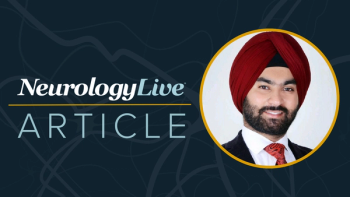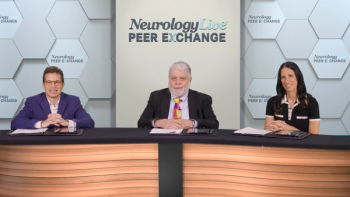
Participation in Get With The Guidelines-Stroke Program Increases Intervention
Hospitals participating in the Get With The Guidelines-Stroke program provided patients with more evidence-based interventions but highlighted a gap in intervening practices.
Lee H. Schwamm, MD
Hospitals that adopt the American Stroke Association’s Get With the Guidelines-Stroke (GWTG-Stroke) program have shown a modest improvement in stroke care for hospitalized patients with ischemic stroke, according to new research.1
Ultimately, the investigation, which included Lee H. Schwamm, MD, the vice chairman of the Department of Neurology at Massachusetts General Hospital, found that patients who were seen at hospitals participating in the GWTG-Stroke program were more likely to receive 5 of 10 evidence-based interventions that are recommended for patients with ischemic stroke.
Notably, though, the difference between the participating and the non-participating was minimal despite its significance. Patients treated at the participating hospitals received a mean of 5.4 interventions (95% CI, 5.2 to 5.6) compared to 4.8 interventions (95% CI, 4.6 to 5.0; P <.001). In an accompanying editorial, Adam Webb, MD, from the division of neuroscience critical car at Emory University Hospital, noted that “this highlights the overall opportunity for improving the quality of stroke care even in those hospitals that were participating in the GWTG registry.”2
The least squares mean (SE), after adjustment for age, sex, Stroke Belt residence, number of hospital beds (tertile), and the presence of Graduate Medical Education residency training programs, for the number of interventions were 5.3 (0.1) and 4.8 (0.1) respectively, a significant difference (P <.001).
In order to contrast the quality of stroke care among participating and non-participating hospitals for admitted patients, Schwamm and colleagues assessed data from a subgroup of 546 patients with ischemic stroke originally included in the REGARDS study.3 In total, 38% (n = 207) of those patients were treated at an institution that participates in the GTWG-Stroke program, while the remaining were not (n = 339).
These patients were assessed for the incidence of the following 10 interventions, all of which were confirmed by 2 of the authors, Karen C. Albright, PhD, DO, MPH, and J. David Rhodes, MSN:
- Intravenous tissue plasminogen activator (IV tPA)
- Swallowing evaluation
- Antithrombotic administration within 48 hours
- Lipid profile assessment
- Receipt of antithrombotic at discharge
- Receipt of statin at discharge
- Neurologist evaluation
- Weight loss and exercise recommendations
- Stroke risk education
- Assessment for rehabilitation services
The findings revealed that those treated at GTW-Stroke institutions were more likely to receive tPA, at a rate of 9.2% (n = 19) compared to 2.4% (n = 8) for a risk ratio of (RR) of 3.74 (95% CI, 1.65 to 8.50); stroke risk education, at a rate of 33.8% (n = 70) compared to 22.8% (n = 77) for a RR of 1.54 (95% CI, 1.16 to 2.05); neurologist evaluation, at a rate of 91.3% (n = 189) compared to 79.1% (n = 268) for a RR of 1.12 (95% CI, 1.05 to 1.20); lipid profile assessment, at a rate of 76.8% (n = 159) compared to 64% (n = 215) for a RR of 1.18 (95% CI, 1.05 to 1.32); as well as a swallowing evaluation, at a rate of 54.6% (n = 113) compared to 41.3% (n = 140) for an RR of 1.25 (95% CI, 1.04 to 1.50).
Those hospitalized in a GWTG-Stroke institution were also more likely to receive a statin, at a rate of 69.9% (n = 144) compared to 62.2% (n = 211) for a RR of 1.10 (95% CI, 0.97 to 1.24), although it was not statistically significant. When the data were adjusted for the year the stroke occurred—data included was from 2003 to 2015—did not impact the interpretation of the adjusted associations.
With regard to the other interventions, the rates were essentially the same. The receipt of antithrombotic medication within 48 hours occurred at rates of 86% and 87% among participating and non-participating hospitals, respectively. Similarly, the respective rates of receiving an antithrombotic at discharge (92.3% vs 91.5%), weight loss counseling (15.1% vs 17.5%), and rehabilitation assessment (77.8% to 76.1%) were also comparable.
Webb wrote that the GTWG-Stroke program “provides clinical tools, quality improvement resources, professional education, a benchmarking of hospital performance, and the benefits of a qualified data registry,” and that there is “no doubt” that these programs have played an enormous role in the last 2 decades of stroke redefinition.
Schwamm and colleagues noted that “only approximately 50% of patients with stroke are treated at participating GWTG-Stroke hospitals; therefore, a sizable proportion of the patients with stroke in the United States are receiving care and have outcomes that are not as good as that received at GWTG-Stroke participating hospitals.”
However, Webb acknowledged that, despite the increase in participation in GTWG-style programs, that participation could be disproportional for hospitals that are smaller or in rural areas. “The lack of the resources that are needed for medical record abstraction and data management remain barriers. This requires a shift in focus from hospital-level improvement to regional stroke systems of care to ensure that all patients have access to high-quality stroke care,” he wrote.
REFERENCES:
1. Howard G, Schwamm LH, Donnelly JP, et al. Participation in Get With the Guidelines—Stroke and Its Association With Quality of Care for Stroke. JAMA Neurol. Epub August 6, 2018. doi:10.1001/jamaneurol.2018.2101.
2. Webb A. The Power of Clinical Registries and Quality Improvement Collaboratives: Get With the Guidelines—Stroke. JAMA Neurol. Epub August 06, 2018. doi:10.1001/jamaneurol.2018.1853
3. Howard VJ, Cushman M, Pulley L, et al. The reasons for geographic and racial differences in stroke study: objectives and design. Neuroepidemiology. 2005;25(3):135-143. doi: 10.1159/000086678.
Newsletter
Keep your finger on the pulse of neurology—subscribe to NeurologyLive for expert interviews, new data, and breakthrough treatment updates.






































